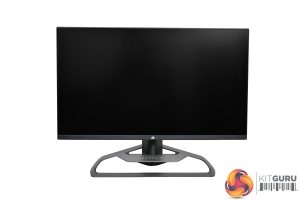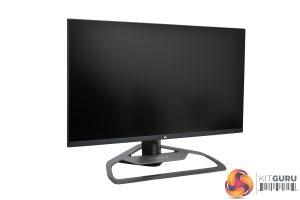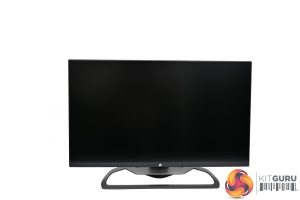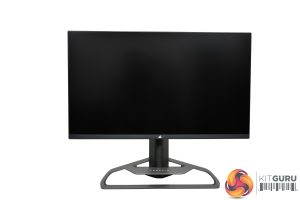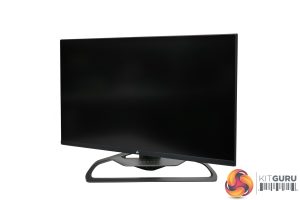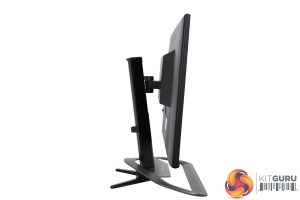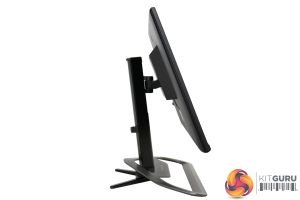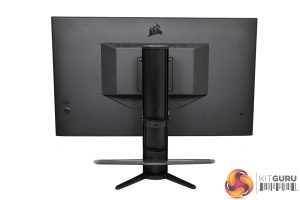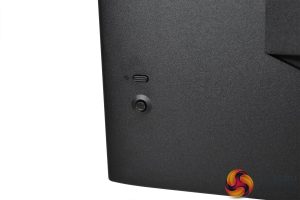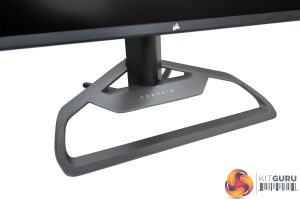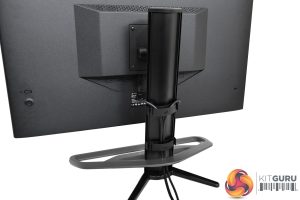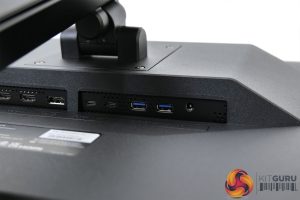Taking our first look at the Xeneon 32QHD165, we can see Corsair hasn't been shy about making some bold stylistic choices, primarily with the included metal stand – but more on that below.
The panel area itself is fairly conventional but quite sleek overall. It's a 32in diagonal so it's not small, but Corsair has opted for a ‘bezel-less' design, which helps keep things looking nice and trim.
We also get a decent amount of ergonomic adjustments, including up to 110mm of height adjust, swivel from -30° / +30°, alongside tilt from -5° / +20°. The only thing missing is any sort of pivot/rotational ability, but for a screen of this size I can see why Corsair didn't implement such a feature.
The stand uses VESA 100×100 mounting too, so if you want to swap it out for a custom arm or stand then you are free to do so.
Round the back of the display, Corsair has kept things very understated – it's made of matte black plastic, with a Corsair logo sitting towards the top. This actually means there is no RGB on the Xeneon at all, something I couldn't quite believe at first considering Corsair has been at the forefront of the RGB boom over the last few years. It would seem they are trying to take a more elegant and sophisticated approach with the Xeneon, and it's certainly a good looking monitor.
We can note a small joystick and power button in the bottom left corner, with the joystick used to navigate Corsair's OSD – there are no other physical buttons on the monitor.
The base of the stand, however, is a bit much for my tastes. It looks fine and is made of metal so it feels very solid, but it is just very large, and unnecessarily so in my option. To give you an idea, from front to back the stand is almost 32cm deep, while its 46cm long across the front. Visually it is certainly unique, but for me I'd have liked to see it scaled down a bit.
I do appreciate the integrated cable management features though, which Corsair calls RapidRoute. This is essentially a few cable management clips placed on the back of the stand through which you can loop all your power and display cables (as shown above), so it seems Corsair has taken inspiration from its chassis business here. It's nothing to go wild about, but it works so it's definitely a good inclusion here.
Lastly, for the connectivity options, we find 2x HDMI 2.0 and 1x DisplayPort 1.4 video inputs, as well as a 3.5mm audio jack. One USB-C DP Alt port can also be used as a display input while offering 15W power delivery, while the second USB-C port is used as the upstream connection for the USB hub, which consists of 2x USB 3.0 Type-A ports. The final port is the power input.
 KitGuru KitGuru.net – Tech News | Hardware News | Hardware Reviews | IOS | Mobile | Gaming | Graphics Cards
KitGuru KitGuru.net – Tech News | Hardware News | Hardware Reviews | IOS | Mobile | Gaming | Graphics Cards
